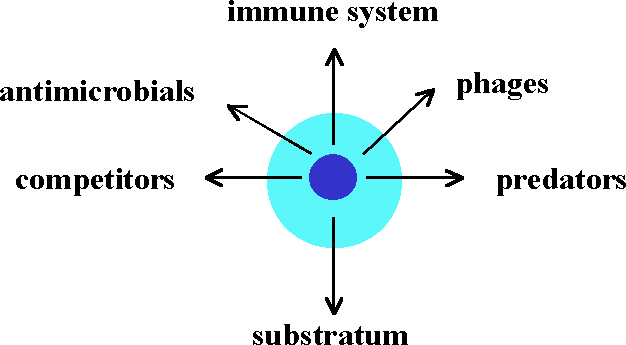
Biofilms with EPS (Extracellular Polymeric Substances)
This section marks the latest completed step of BacSim development, the inclusion of EPS formation in the model.
The structure of the biofilm was dramatically influenced by EPS production. All effects of EPS formation on the growth of producing and non-producing strains could be understood in terms of the energy cost of EPS production. By the same token, EPS accumulation can fall as its rate of production increases. Further, the effect of introducing binding forces between cells was investigated.
Please read this paper for a detailed description of the biofilm model with EPS production. You can also download the source of the model, or run the simulation in your web browser, see the section on BacSim.
Have a look at images and movies of biofilms producing EPS or capsules at various rates. They are prettier in colour than the grey figures in the paper. The images show biofilms at the end of the simulated time interval (3 weeks), with oxygen contours demonstrating the oxygen limitation in the biofilm. All the movies are animated gif's since these give the "least largest" file sizes, nevertheless, these files are rather big. Apologies for any inconvenience caused.
| Biofilm without EPS production (control): | image | movie (420k) |
| Biofilm with high rate of EPS production by the ammonia oxidiser: | image | movie (424k) |
| Biofilm with low rate of EPS production by the ammonia oxidiser: | image | movie (568k) |
| Biofilm with low rate of EPS production by the ammonia oxidiser, cells sticky: | image | movie (500k) |
| Biofilm with high rate of capsule formation by the ammonia oxidiser: | image | movie (404k) |
| Biofilm with low rate of capsule formation by the ammonia oxidiser: | image | movie (540k) |